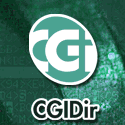|
|
|||||||||||||||||||||||||
|
|||||||||||||||||||||||||
|
Search
Scripts
Press Releases by JavaScriptSearch
Gain Credible Insight into Webfeed, in its RSS and Atom Forms, and the Related Technology of Podcasting Inside New Report "2007 Technology - Internet - Volume 2 - Web Development & Audio-Visual CodingMay 9, 2007; 02:35 AM This report introduces technical specialists and non-technical readers to the major technologies of the World Wide Web, including audio and video compression technologies used for the Web, telecommunications and broadcasting. The author provides overviews of and detailed introductions to the key technologies which in various combinations provide the rich communications environment of the Web. The report begins with the basic transport protocol, HTTP and its secure HTTPS version, which is based on SSL/TLS (Secure Sockets Layer/Transport Layer Security). HTTP 1.1 is a sophisticated resource request protocol with capabilities beyond what is visible with ordinary web-browsing. HTTP 1.1 is the basis of WebDav (Web-based Distributed Authoring and Versioning) and the inter-server programming techniques known as Web-services. The author discusses HTML and the related markup languages XML and XHTML, which are the basis of web-page design. These are complex languages which work together with JavaScript, ECMAScript and (as Microsoft terms it) Active Scripting, and with Cascading Style Sheets (CSS). The author introduces these page design and techniques together with the Document Object Model: a standardised programming framework which enables a JavaScript in the page to modify the page itself, respond to user input and to communicate with a remote server. This leads to a detailed discussion of Ajax programming, in which a web page alters itself, without reloading, whilst responding to user actions and by retrieving data from the server. Ajax is a promising set of techniques, exemplified by web applications such as Google Maps. However the author highlights a number of drawbacks, including unexpected and impractical user interface behaviour, erratic performance and browser compatibility problems. The report describes WebFeed, in its RSS and Atom forms, and the related technology of PodCasting. These are genuinely new and important protocols, which enable flows of information – usually links to other resources – on a push basis. The author describes and compare the major database-driven web-server programming techniques which are the basis of most commercial and organisational sites, including: Java Servlets, Java Platform Enterprise Edition, cgi-bin programming, C, C++, daemons, Perl, PHP, Python, Apache, MySQL, PostgreSQL, Microsoft IIS, Active Server Pages (ASP) and the Common Language Infrastructure (CLI). Choosing between these techniques can be difficult, and once a site is established with one technology, only a complete rewrite will enable it to be run with another. Related to server programming languages and environments are content management systems, including ColdFusion, Drupal, Mambo, Joomla, Plone and Ruby on Rails on which many large websites are built. The author discusses these and their integrated programming languages. The report describes the major graphic file formats in common use on websites, including JPEG, GIF, PNG, PDF, SVG and Flash - the last three of which can involve client side programming, interactivity. SVG and Flash can involve highly sophisticated programming sufficient to implement animation and interactivity. We discuss major trends, including “Web 2.0”, weblogs, pay-per-click advertising, mashups (sites which combine information from other sites, such as Google Maps and weather information) and using the Web to cater for the substantial “long tail” of the demand curve. The author also discusses the debate over calls to legislate “Network Neutrality” vs. the desire of ISPs to use Quality of Service and other arrangements to provide favourable carriage of certain types of traffic, or traffic to and from certain destinations. Web communications increasingly involves delivery of complete sound and video programs which formerly were only available via cable, broadcast and stored media (VCRs and DVDs). The report concludes with a comprehensive description of the major sound and video compression techniques, including MPEG-4 - which goes far beyond compression to include client-side applications, Virtual Reality Modelling Language 3D animation, voice synthesis, sound synthesis and processing of local sound signals. We provide detailed descriptions of MP3 audio and MPEG-2 and H.264/AVC video compression systems as well as the MPEG-7 metadata and MPEG-21 Digital Rights Management (DRM) standards. The Technical Library is intended for readers with minimal technical background, and for technical specialists in related fields. The Library’s Biennial and Web Reports provide an overview of a field together with sufficient low level detail to enable readers to develop a genuine understanding of the various technologies. While most of the material is introductory and of a tutorial nature, we also provide critical viewpoints of particular technologies and discuss how different technologies compete with each other or can be used together. This is intended to enable our customers to critically evaluate proposals and to extend their ability to plan their own projects and investments. The companion volume to this report is available and includes information on Internet Infrastructure technologies: 2007 Internet Technology - Volume 1 – Infrastructure Topics Include: 1. HTTP BASICS 2. HTTP PROXIES, COOKIES, WEBDAV AND WEB SERVICES 3. HTML BASICS 4. HTML 4.01 AND XHTML 5. CASCADING STYLE SHEETS AND DOM 6. WEBFEED, PODCASTING AND CLIENT SIDE SCRIPTING 7. AJAX PAGES AND APPLICATIONS 8. SERVER PROGRAMMING 9. FRAMEWORKS AND CONTENT MANAGEMENT SYSTEMS 10. FILE FORMATS, WEB 2.0 AND FUTURES 11. AUDIO VISUAL CODING – MPEG 12. GLOSSARY OF ABBREVIATIONS Exhibit 1 – H.264/AVC Levels For more information visit http://www.researchandmarkets.com/reports/c56169 |
|
|
|
|
| Copyright © 1998 - 2018 DevStart, Inc. All Rights Reserved | ||




 PRESS BY MONTH
PRESS BY MONTH EDITOR'S DESK
EDITOR'S DESK SUBMIT PRESS
SUBMIT PRESS
